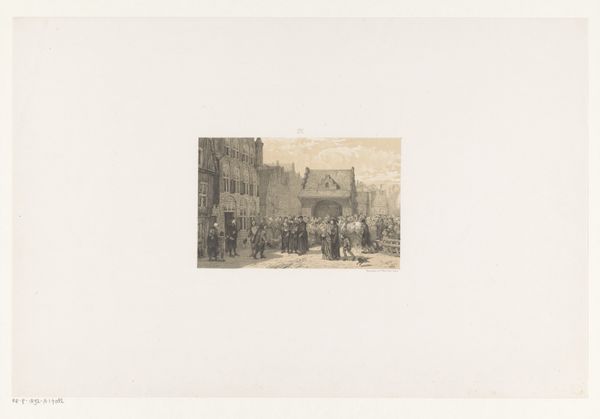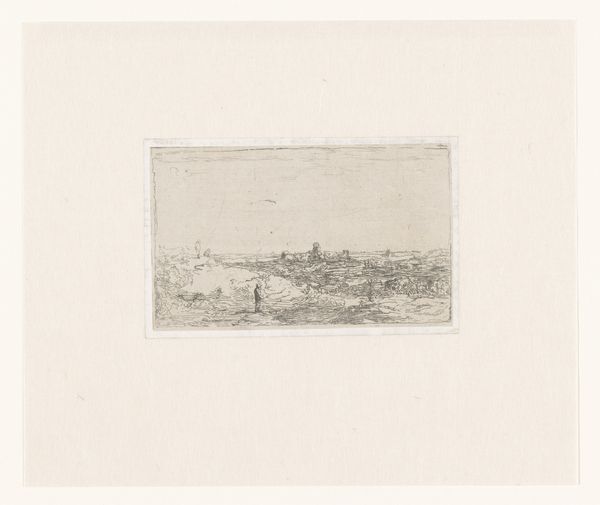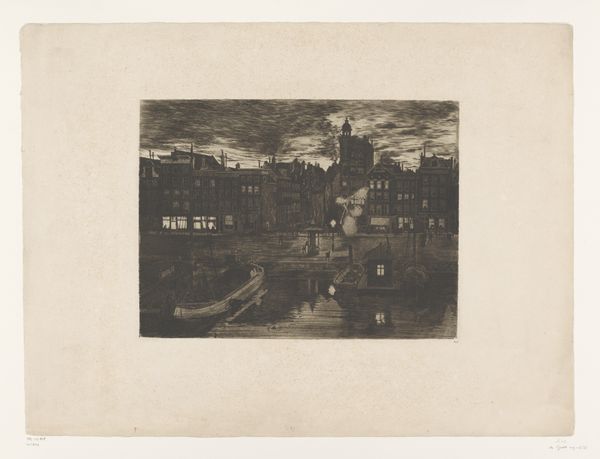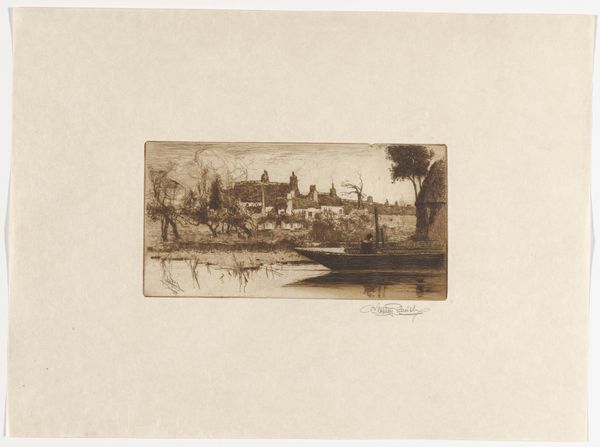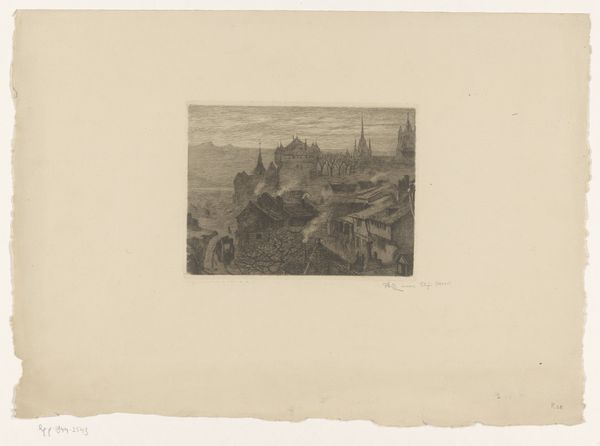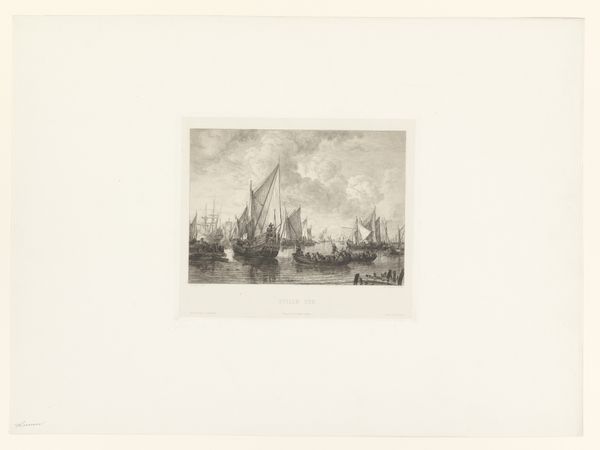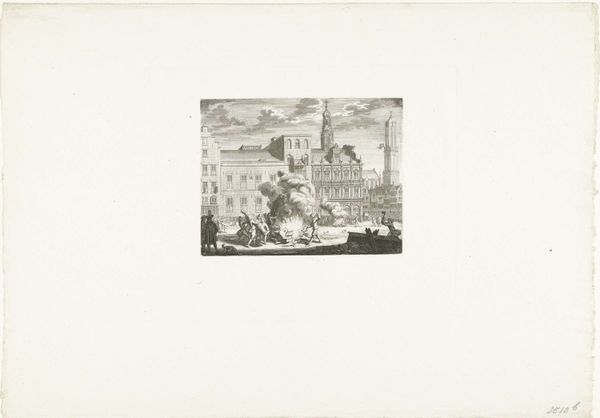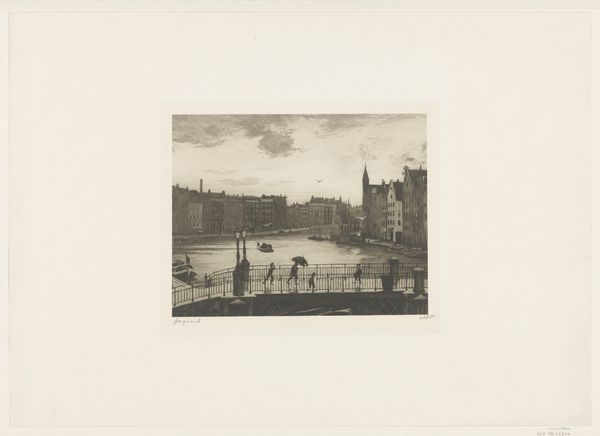
print, engraving
#
16_19th-century
# print
#
landscape
#
history-painting
#
engraving
#
realism
Dimensions: height 354 mm, width 535 mm
Copyright: Rijks Museum: Open Domain
This print, ‘Graaf van Bossu geeft zich over aan de Spaanse inquisitie,’ was made by Johan Conrad Greive in the 19th century. It’s an etching, meaning that the artist would have coated a metal plate with wax, drawn his image into it, and then bathed the plate in acid. The acid bites into the exposed lines, creating an image that can then be inked and printed. What I find particularly striking is how Greive used this essentially reproductive medium to comment on labor, politics, and consumption. Etching allowed for the mass production of images, making art more accessible, yet also embedding it within a system of commerce. The level of detail he achieved speaks to the intense labor involved, a factor often overlooked when we consider prints. So, while this may seem like a straightforward historical scene, remember that the materials and making processes are deeply entwined with the social and cultural context of its creation. It encourages us to think about the relationship between art, labor, and the wider world.
Comments
No comments
Be the first to comment and join the conversation on the ultimate creative platform.
